-
 Bitcoin
Bitcoin $119100
0.00% -
 Ethereum
Ethereum $3649
-2.30% -
 XRP
XRP $3.213
-8.45% -
 Tether USDt
Tether USDt $1.000
-0.01% -
 BNB
BNB $783.2
-1.26% -
 Solana
Solana $191.1
-5.48% -
 USDC
USDC $0.9999
0.00% -
 Dogecoin
Dogecoin $0.2440
-8.65% -
 TRON
TRON $0.3103
-2.02% -
 Cardano
Cardano $0.8201
-7.68% -
 Hyperliquid
Hyperliquid $44.25
-3.09% -
 Stellar
Stellar $0.4326
-7.78% -
 Sui
Sui $3.777
-5.00% -
 Chainlink
Chainlink $18.34
-6.34% -
 Hedera
Hedera $0.2477
-8.72% -
 Bitcoin Cash
Bitcoin Cash $521.0
-0.79% -
 Avalanche
Avalanche $24.08
-6.29% -
 Litecoin
Litecoin $113.5
-6.79% -
 UNUS SED LEO
UNUS SED LEO $8.970
-0.16% -
 Shiba Inu
Shiba Inu $0.00001397
-8.55% -
 Toncoin
Toncoin $3.231
-2.27% -
 Ethena USDe
Ethena USDe $1.001
0.03% -
 Polkadot
Polkadot $4.174
-6.93% -
 Uniswap
Uniswap $10.37
-4.08% -
 Monero
Monero $317.6
-1.77% -
 Bitget Token
Bitget Token $4.720
-2.36% -
 Pepe
Pepe $0.00001290
-8.38% -
 Dai
Dai $1.000
0.02% -
 Aave
Aave $293.2
-4.95% -
 Bittensor
Bittensor $431.1
-3.60%
How to judge the band buying point of 30-minute MACD underwater secondary golden cross + 1-hour Yang line reverse?
The 30-minute MACD underwater secondary golden cross and 1-hour Yang line reversal together signal a high-probability bullish entry in crypto, indicating weakening bearish momentum and renewed buying pressure near key support, best confirmed with volume and multi-timeframe alignment.
Jul 24, 2025 at 03:22 am
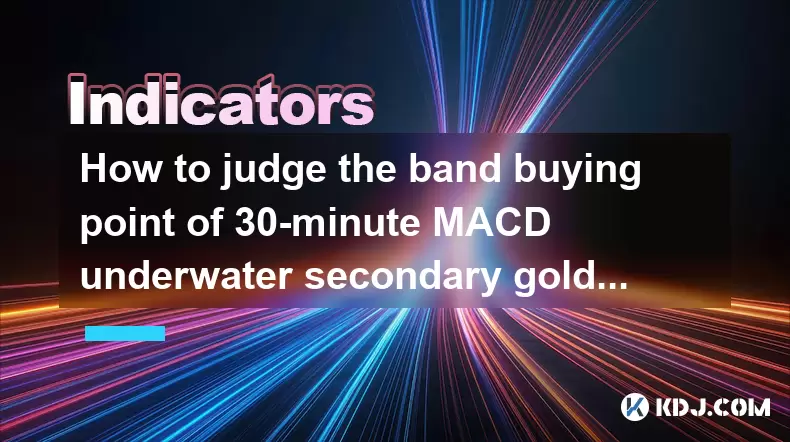
Understanding the 30-Minute MACD Underwater Secondary Golden Cross
The 30-minute MACD underwater secondary golden cross is a technical signal used by traders to identify potential reversal points in cryptocurrency price action. The term "underwater" refers to the situation where the MACD line is below the signal line and both are below the zero line, indicating bearish momentum. A "golden cross" occurs when the MACD line crosses above the signal line, suggesting a shift toward bullish momentum. A "secondary" golden cross means this crossover happens a second time while still under the zero line, which can signal a strengthening reversal attempt.
To identify this pattern:
- Open the 30-minute chart of the cryptocurrency you are analyzing.
- Apply the MACD indicator with standard settings (12, 26, 9).
- Wait for the first golden cross to occur below the zero line.
- After a pullback or retest, watch for the MACD line to dip again and cross above the signal line a second time.
- This second crossover under the zero line is the key signal.
The importance of this pattern lies in its implication of diminishing selling pressure and renewed buying interest, even though the overall trend may still be bearish. It often appears after a prolonged downtrend and can precede a significant upward move if confirmed by other indicators.
Interpreting the 1-Hour Yang Line Reversal Signal
The 1-hour Yang line reversal refers to a bullish candlestick pattern on the 1-hour timeframe where a green (Yang) candle closes higher than the previous candle’s close, breaking a sequence of red (Yin) candles. This suggests a potential shift from bearish to bullish sentiment. For this signal to be meaningful, it should occur in alignment with the 30-minute MACD secondary golden cross.
To spot this reversal:
- Switch to the 1-hour chart of the same cryptocurrency.
- Look for a series of consecutive red candles indicating a downtrend.
- Identify a green candle that closes above the close of the prior red candle.
- Confirm that the volume on the green candle is higher than average, which adds credibility to the reversal.
This Yang line acts as a confirmation that buyers are stepping in. When it coincides with the 30-minute MACD secondary golden cross, it increases the probability of a successful upward move. The alignment across timeframes strengthens the signal, reducing false positives.
Combining Both Signals for Entry Confirmation
When both the 30-minute MACD underwater secondary golden cross and the 1-hour Yang line reversal occur simultaneously or within a short time window, they form a high-probability entry setup. Traders use this confluence to judge a band buying point, meaning a strategic entry into a long position during a temporary dip in a broader trend or at the start of a new uptrend.
To validate the combined signal:
- Ensure the 30-minute MACD secondary golden cross has just formed or is forming.
- Confirm that the 1-hour chart displays a clear Yang candle closing above the prior candle.
- Check that both signals occur near a key support level, such as a previous swing low, Fibonacci retracement level, or trendline.
- Monitor trading volume on both timeframes to ensure increased participation during the reversal.
This multi-timeframe confirmation helps filter out noise and improves the accuracy of the entry point. The band buying point is not just about timing but also about contextual alignment—price structure, momentum, and volume must support the signal.
Setting Up the Trade: Entry, Stop-Loss, and Take-Profit
Once the dual signal is confirmed, executing the trade requires precision. The goal is to enter at the earliest sign of reversal while managing risk effectively.
To place the trade:
- Enter long at the close of the 1-hour Yang candle or at the opening of the next candle.
- Set a stop-loss below the lowest point of the recent price swing that preceded the reversal, ensuring it accounts for normal volatility.
- Use a risk-reward ratio of at least 1:2, meaning the potential profit should be double the risk.
- Consider using a trailing stop once the price moves in your favor to lock in gains.
For take-profit levels:
- Target the nearest resistance zone identified on the 4-hour or daily chart.
- Alternatively, use Fibonacci extension levels (1.618 or 2.0) from the recent downtrend.
- Scale out of the position—sell half at the first target and let the rest run with a trailing stop.
Proper position sizing is critical. Never risk more than 1-2% of your trading capital on a single setup, even if the signal appears strong.
Common Pitfalls and How to Avoid Them
Many traders misinterpret the MACD underwater secondary golden cross as a standalone signal, leading to premature entries. The absence of confirmation from the 1-hour Yang line can result in losses if the market continues to decline.
To avoid false signals:
- Do not act on the secondary golden cross if the 1-hour candle remains red or lacks volume.
- Avoid trading during low-liquidity periods or major news events that can distort price action.
- Ensure the MACD histogram is contracting, indicating weakening bearish momentum, before the crossover.
- Never ignore the overall market trend—if Bitcoin is in a strong downtrend, altcoins are likely to follow, reducing the reliability of bullish signals.
Another mistake is placing the stop-loss too tight, causing early exit due to normal market noise. Use Average True Range (ATR) to determine a reasonable stop distance based on volatility.
Backtesting the Strategy for Reliability
Before applying this strategy in live trading, backtesting on historical data is essential. This helps assess how often the combined signal leads to profitable outcomes.
To backtest:
- Select a cryptocurrency pair, such as BTC/USDT or ETH/USDT.
- Go back at least 3–6 months on the 30-minute and 1-hour charts.
- Manually scan for instances where the 30-minute MACD formed a secondary golden cross under zero.
- Check if a 1-hour Yang line reversal occurred within the same or next candle.
- Record the price movement after entry: did it reach 2x risk before hitting stop-loss?
- Calculate the win rate and average reward-to-risk ratio.
Use trading platforms like TradingView to replay price action and mark entries. This process builds confidence and helps refine the exact criteria for what constitutes a valid signal.
Frequently Asked Questions
What if the 1-hour Yang candle is small and lacks volume?
A small Yang candle with low volume suggests weak buying pressure. Even if the 30-minute MACD shows a secondary golden cross, the lack of confirmation on the higher timeframe makes the signal unreliable. It's best to wait for a stronger candle or additional bullish confirmation before entering.
Can this strategy be used on timeframes other than 30-minute and 1-hour?
While the core logic can be adapted, the 30-minute and 1-hour combination is optimized for short-term swing trading in crypto. Using lower timeframes increases noise, while higher ones may delay the signal. Adjusting requires retesting and recalibrating entry rules.
How do I know if the MACD crossover is truly "secondary"?
A secondary crossover must occur after a prior golden cross and subsequent retest. If the MACD lines cross once, diverge, then cross again above the signal line while still below zero, it qualifies. If there was no first cross, it’s not secondary.
Should I use additional indicators to confirm this setup?
Yes. Indicators like RSI (above 30 from oversold) or support from a rising volume profile can enhance reliability. However, avoid overloading the chart—stick to 1–2 confirming tools to maintain clarity.
Disclaimer:info@kdj.com
The information provided is not trading advice. kdj.com does not assume any responsibility for any investments made based on the information provided in this article. Cryptocurrencies are highly volatile and it is highly recommended that you invest with caution after thorough research!
If you believe that the content used on this website infringes your copyright, please contact us immediately (info@kdj.com) and we will delete it promptly.
- South Korea's Credit Card Industry Embraces Stablecoin Regulations: A New Era?
- 2025-07-24 10:30:12
- Trump, AI, and Deregulation: A Wild West Tech Landscape?
- 2025-07-24 10:30:12
- Bitcoin Cash (BCH) Price Forecast & Trends: What's the Buzz?
- 2025-07-24 08:50:12
- Public Companies and Ethereum: A $3.2 Billion Bet on the Future?
- 2025-07-24 09:10:12
- XRP, Safe Havens, and BTC Miners: Navigating Crypto's Latest Moves
- 2025-07-24 08:30:12
- XRP, SEC, and ETFs: A Crypto Rollercoaster
- 2025-07-24 09:10:12
Related knowledge
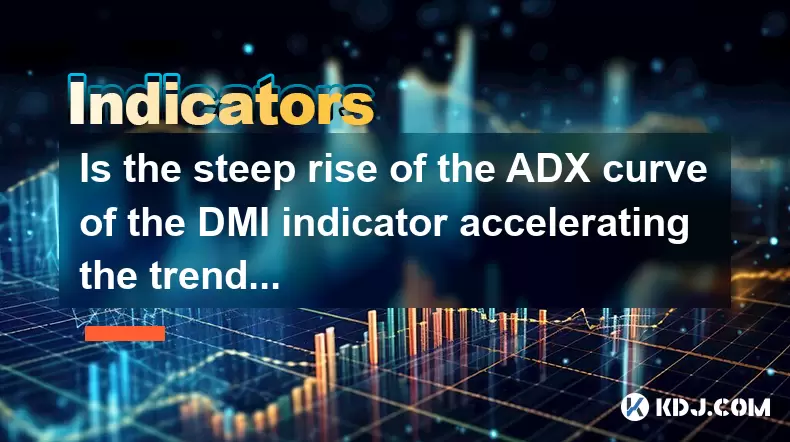
Is the steep rise of the ADX curve of the DMI indicator accelerating the trend or about to reverse?
Jul 24,2025 at 11:15am
Understanding the DMI Indicator and Its ComponentsThe Directional Movement Index (DMI) is a technical analysis tool used to identify the presence and ...
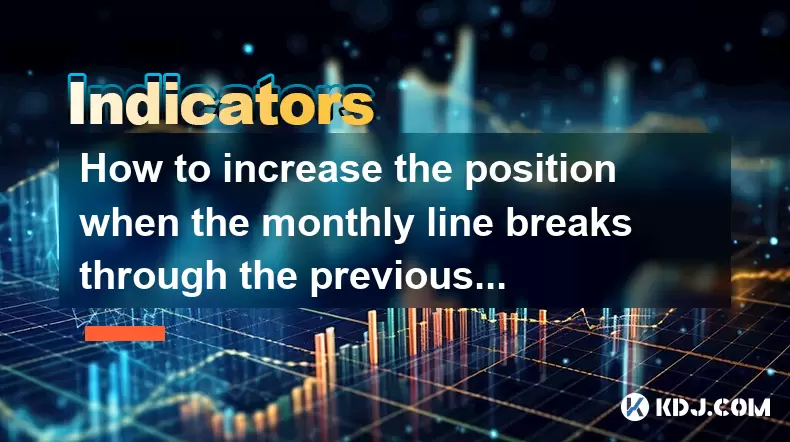
How to increase the position when the monthly line breaks through the previous high + the weekly KD golden cross + the daily line gaps?
Jul 24,2025 at 09:42am
Understanding the Monthly Line Breakout Beyond Previous HighWhen the monthly line breaks through the previous high, it signals a powerful shift in lon...
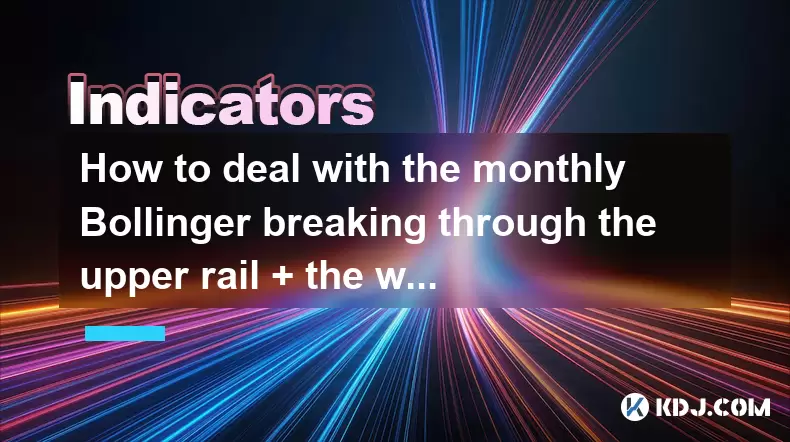
How to deal with the monthly Bollinger breaking through the upper rail + the weekly RSI overbought + the daily line's long negative correction?
Jul 24,2025 at 08:42am
Understanding the Bollinger Bands Breakout on the Monthly ChartWhen the monthly Bollinger Bands experience a breakout above the upper rail, it signals...
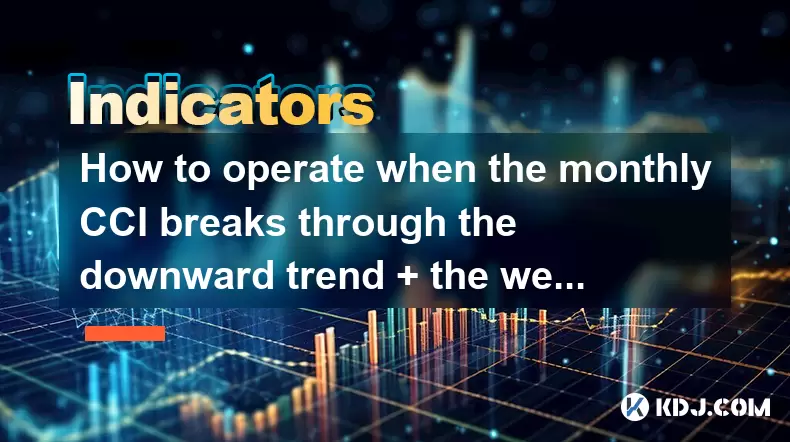
How to operate when the monthly CCI breaks through the downward trend + the weekly line's three consecutive positives + the daily line's shrinking volume and stepping back?
Jul 24,2025 at 09:00am
Understanding the CCI Indicator and Its Role in Trend AnalysisThe Commodity Channel Index (CCI) is a momentum-based oscillator used to identify overbo...
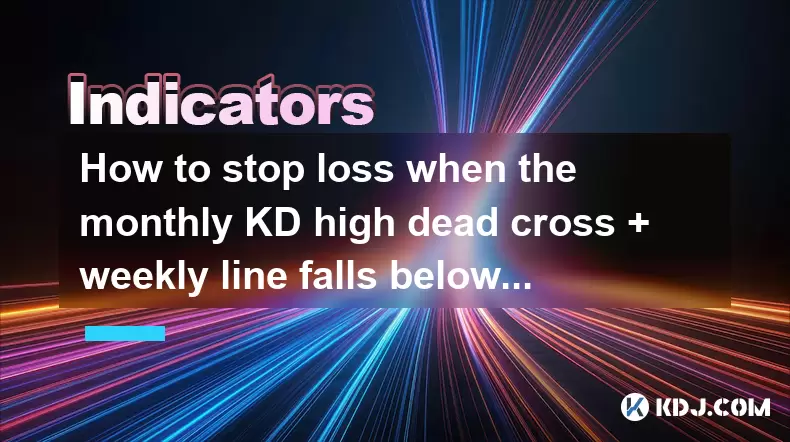
How to stop loss when the monthly KD high dead cross + weekly line falls below the 20-week line + daily line pulls back on the 5-day line?
Jul 24,2025 at 07:00am
Understanding the Indicators: KD, Weekly, and Daily Moving AveragesWhen traders analyze cryptocurrency price movements, they often rely on technical i...
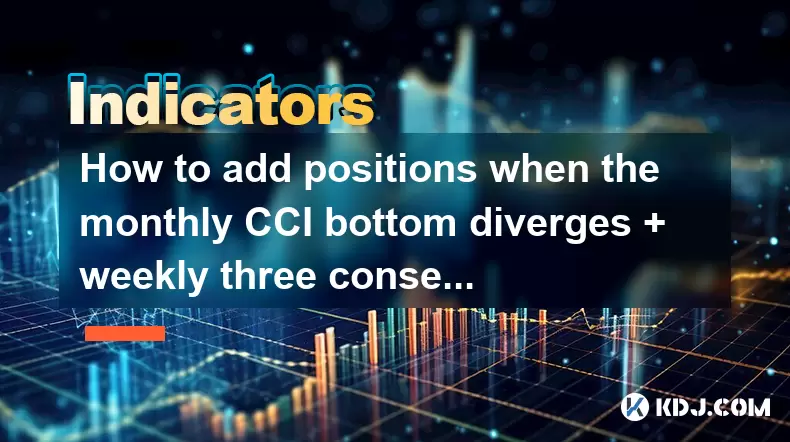
How to add positions when the monthly CCI bottom diverges + weekly three consecutive Yang + daily line gap is not filled?
Jul 24,2025 at 05:22am
Understanding the Monthly CCI Bottom DivergenceWhen analyzing the monthly CCI bottom divergence, traders are identifying a potential reversal signal i...

Is the steep rise of the ADX curve of the DMI indicator accelerating the trend or about to reverse?
Jul 24,2025 at 11:15am
Understanding the DMI Indicator and Its ComponentsThe Directional Movement Index (DMI) is a technical analysis tool used to identify the presence and ...

How to increase the position when the monthly line breaks through the previous high + the weekly KD golden cross + the daily line gaps?
Jul 24,2025 at 09:42am
Understanding the Monthly Line Breakout Beyond Previous HighWhen the monthly line breaks through the previous high, it signals a powerful shift in lon...

How to deal with the monthly Bollinger breaking through the upper rail + the weekly RSI overbought + the daily line's long negative correction?
Jul 24,2025 at 08:42am
Understanding the Bollinger Bands Breakout on the Monthly ChartWhen the monthly Bollinger Bands experience a breakout above the upper rail, it signals...

How to operate when the monthly CCI breaks through the downward trend + the weekly line's three consecutive positives + the daily line's shrinking volume and stepping back?
Jul 24,2025 at 09:00am
Understanding the CCI Indicator and Its Role in Trend AnalysisThe Commodity Channel Index (CCI) is a momentum-based oscillator used to identify overbo...

How to stop loss when the monthly KD high dead cross + weekly line falls below the 20-week line + daily line pulls back on the 5-day line?
Jul 24,2025 at 07:00am
Understanding the Indicators: KD, Weekly, and Daily Moving AveragesWhen traders analyze cryptocurrency price movements, they often rely on technical i...

How to add positions when the monthly CCI bottom diverges + weekly three consecutive Yang + daily line gap is not filled?
Jul 24,2025 at 05:22am
Understanding the Monthly CCI Bottom DivergenceWhen analyzing the monthly CCI bottom divergence, traders are identifying a potential reversal signal i...
See all articles

























































































